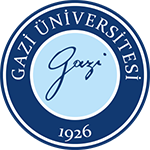ABSTRACT
Pulmonary arterial hypertension (PAH) is a rare vascular disease and is associated with progressive increase in pulmonary vascular resistance and pulmonary arterial pressure, which leads to right ventricular failure and death. Idiopathic PAH, con-nective tissue disease, and congenital heart disease with left to right shunts cause PAH. The diagnosis of PAH is established hemodynamically with a mean pulmonary artery pressure > 25 mmHg at rest and > 30 mmHg in exercise. PAH must be taken into consideration for patients with complaints of progressive dyspnea even if they have no underlying pulmonary or heart disease. Transthoracic echocardiography and right heart catheterization are important tools for diagnosis. The current treatment approaches are prostanoid analogues, endothelin antagonists, and PDE-inhibitors. In our report we aimed to evaluate the effect of vasoactive agents in the treatment of patients with PAH.



